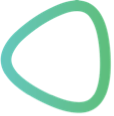Library
This site of the NETSSAF tutorial contains various documents related to the process of demand creation used in participatory planning related to sustainable sanitation. These documents can support you in your planning process and act as examples and case studies.
Livestock manures represent a valuable resource, which can produce clean renewable energy and valuable fertilizer. In many part os the world, livestock production is increasing. However, the amount of gas produced by small scale biogas plants is very limited. This paper researches how small-scale biogas plants can be adapted for use in cold regions in developing countries.
SOMMER, S.G. NORDDAHL, B. (2008): Optimising simple biogas digesters for use in cold regions of developing countries. Odense: University of Southern Denmark URL [Visita: 29.07.2010]MSP Resource Portal
- Poster with an overview on the struvite production process in Nepal, process inputs and outputs.
Summary, basic principles and many definitions of water balance and the focus areas to reduce non-revenue water.
NGUYEN, C.T. (2005): Non-Revenue water Assessment. Hanoi: South East Asian Water Utilities Network (SEAWUN). [Accessed: 29.07.2010] PDFThis report provides an overview of various agricultural irrigation methods. The variations of each general method (surface irrigation, drip/micro irrigation, sprinkler irrigation, and sub-irrigation) are described. The capabilities, limitations, institutional considerations, and economic factors of the methods and their variations are explained. These explanations will facilitate the proper selection of irrigation method for respective circumstances, depending upon crop, climate, economics, water quality, support infrastructure, energy availability, and numerous other factors.
BURT, C. M. (2000): Selection of irrigation methods for agriculture. Environmental and Water Research Institute. Virginia: ASCE Publications URL [Visita: 29.07.2010]Poster illustrating the potential of operating struvite recovery as a business for independent fertiliser production.
EAWAG (2009): Struvite recovery in Kathmandu: A business model for increased food security. Swiss Federal Institute of Aquatic Science and Technology (EAWAG). [Accessed: 29.07.2010] PDFPreliminary research on the pilot scale struvite reactor developed and operated in the Kathmandu Valley.
ETTER, B. (2009): Struvite - Recovery from urine at community scale in Nepal. Duebendorf: Swiss Federal Institute of Aquatic Science and Technology (Eawag). [Acccessed: 29.07.2010] PDFPress release on the motivation for struvite recovery in a developing country setting.
EAWAG (2009): World Toilet Day: Creating Value from Urine. Press Release. Duebendorf: Swiss Federal Institute of Aquatic Science and Technology (EAWAG). [Accessed: 29.07.2010] PDFThis site of the NETSSAF tutorial contains various documents related to the process of describing the settlement conditions in your project area. These documents can support you in your planning process and act as examples and case studies. This website contains the following documents a) A check-list of water and sanitation services conditions b) A check-list of the demographic and cultural, economic and financial, institutional and health aspects c) A check-list of the climatic and soil characteristic d) Further Readings about assessment of current status e) Guidelines for carrying out an assessment of current status f) Review of the existing participatory sanitation planning g )Materials to prepare your team for community field work and community mapping.
The official website of the Department of Water Affairs of the Republic of South Africa presents a lot of water related projects and a library of documents.
The Water Research Commission website gives a lot of information about water and wastewater treatment.
The Toolbox of the Global Water Partnership offers a lot of information on institutional roles in the water sector. It offers two main informational sectors in this topic, one sector for creating an organisational framework and one for building institutional capacity.
This document includes a list of the key principles in forming an institutional framework, as well as some graphs to show the roles and responsibilities for such a framework. It is good for getting an overview on the approach.
KASRILS, R. (2003): Strategic Framework for Water Services. Water is life, sanitation is dignity. Republic of South Africa: Department of Water Affairs and Forestry URL [Visita: 28.07.2010]